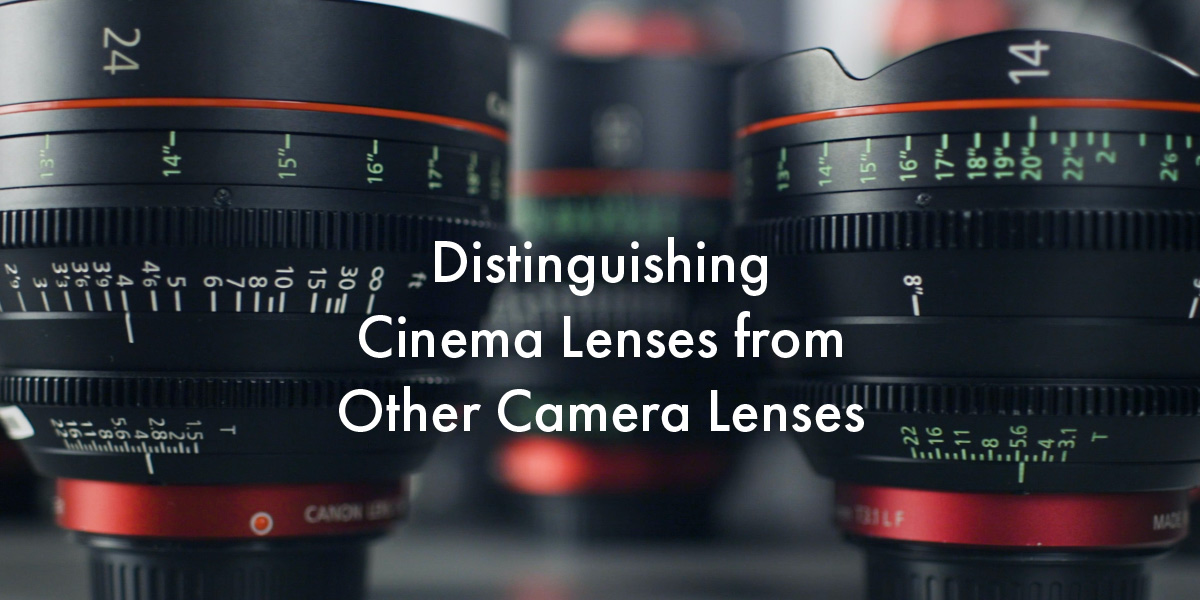Distinguishing Cinema Lenses from Other Camera Lenses
Posted by Ayo Olasupo on 7th Jan 2022

The great cinema lens. If you’ve referred to another lens in your kit as a beast, you may not actually know what that word means. The cinema lens is a verifiable ferocious beast. Cinema lenses are made specifically for producing great video, so there are quite a few differences between them and the photography lenses you’re probably accustomed to.
Cinema lenses are built differently. That’s not a figure of speech. They need to be sturdy, so they’re built for the rigors of shooting with other heavy gear. You may have previously purchased cheap, plastic lenses for a DSLR. There’s no such thing in cinema lenses. Plastic just won’t work. The strength of the metal construction also makes it possible to use other quality parts. The glass in a cinema lens is also superior to photo lenses. Where photo lenses sometimes have sharpness issues, cinema lenses do not. Cinema lenses are sharp across the entire frame, even in the corners. Accidental softness is very noticeable in video, so cinema lenses maintain complete sharpness everywhere. They also greatly reduce common problems like chromatic aberration, barrel distortion, and vignetting. It’s easy for a photographer to fix those issues in post – they are only editing one frame. A videographer’s life would be hell if every frame in a video had to be corrected.
Getting great shots in camera makes life so much easier. Speaking of getting it right at the shoot, cinema lenses give amazing bokeh. We’ve all been entranced by video shots with amazing bokeh. Every videographer knows its emotive power. Cinema lens' bokeh is incredible, and can be totally controlled thanks to the lens’ T-stops. T-stops are not like F-stops. F-stops tell you how wide the aperture opening is in your lens. T-stops tell you exactly how much light is coming through the lens. That accuracy is important. If you need to switch lenses for a scene, T-stops make it possible to switch lenses while keeping the lighting identical to what you captured with the previous lens. That versatility is invaluable videography, where consistency is imperative. Sometimes cinema lenses are even sold in sets of multiple focal lengths at matching T-stops, simply so they can be interchanged without a change in lighting.
It may be disappointing to discover that there’s no autofocus in cinema lenses, but that does give you total control over your focus. It also makes cinema lenses compatible with follow focus devices so the focus can be changed smoothly, on the fly. Focus in cinema lenses is smooth, even when switching the focus to different subjects. Cinema lenses don’t move. The focus is adjusted inside the lens so your rig remains stable when changing focus. Slap a cinema lens on your camera and the ferocious beast will roar.
It’s difficult to distinguish between a good cinema lens and bad one. Cinema lenses are almost pure quality, so there isn’t much fault to find. They aren’t great because manufacturers care more about them, they’re great because they have to be. Because of the nature of shooting video, cinema lenses have to consistently perform at their best, and be strong enough to withstand the rigors of a shoot. Video shoots tend to be longer than photo shoots and video equipment is heavy. If cinema lenses are too weak for the other equipment, they’ll break and be useless.
Choosing a cinema lens is just like choosing a photography lens. When you know which focal length or range you want, you can go and find the lens you need. Whether you know what you need or not, look through our cinema lenses here to find the right tool to make amazing video.

